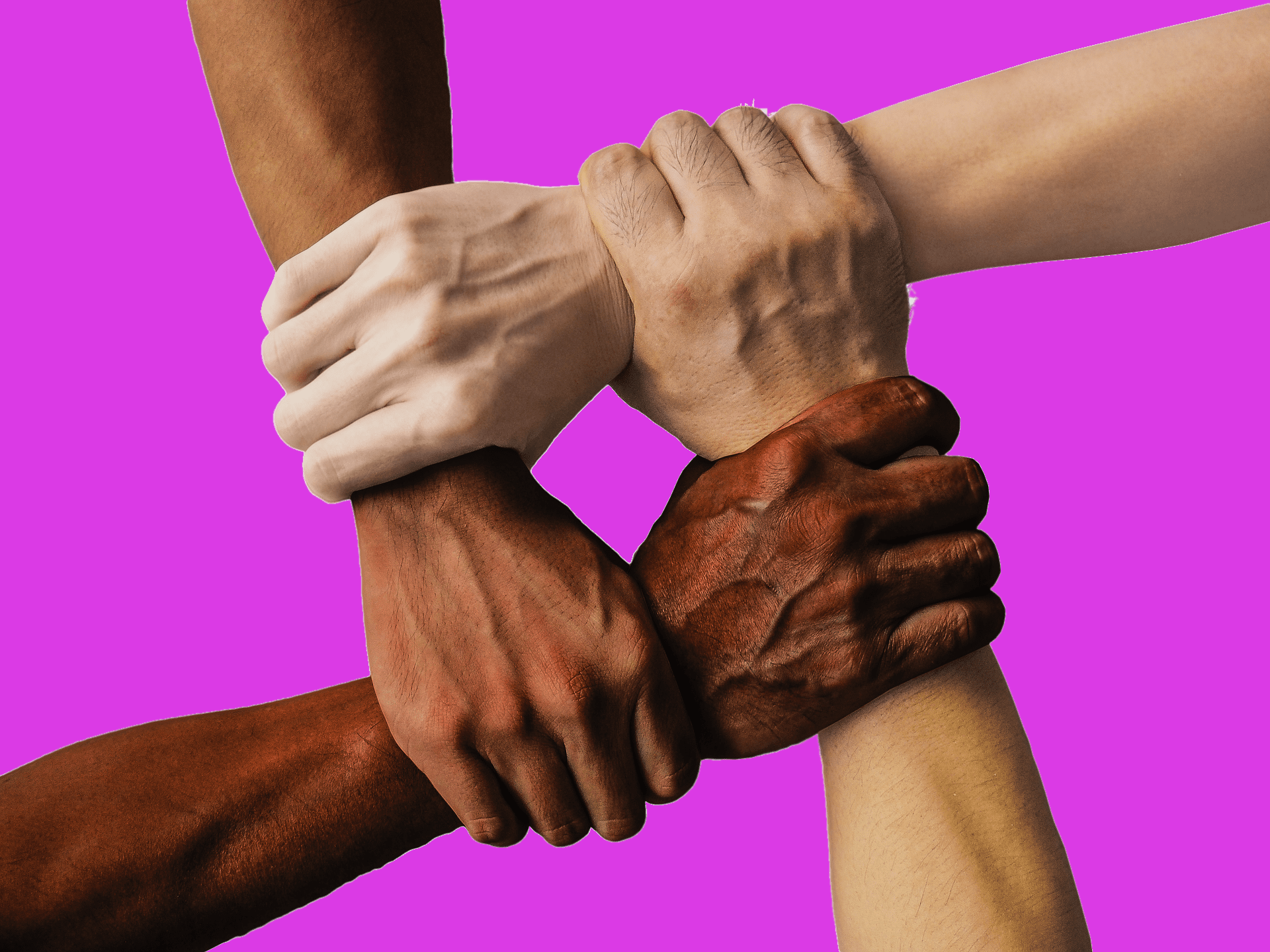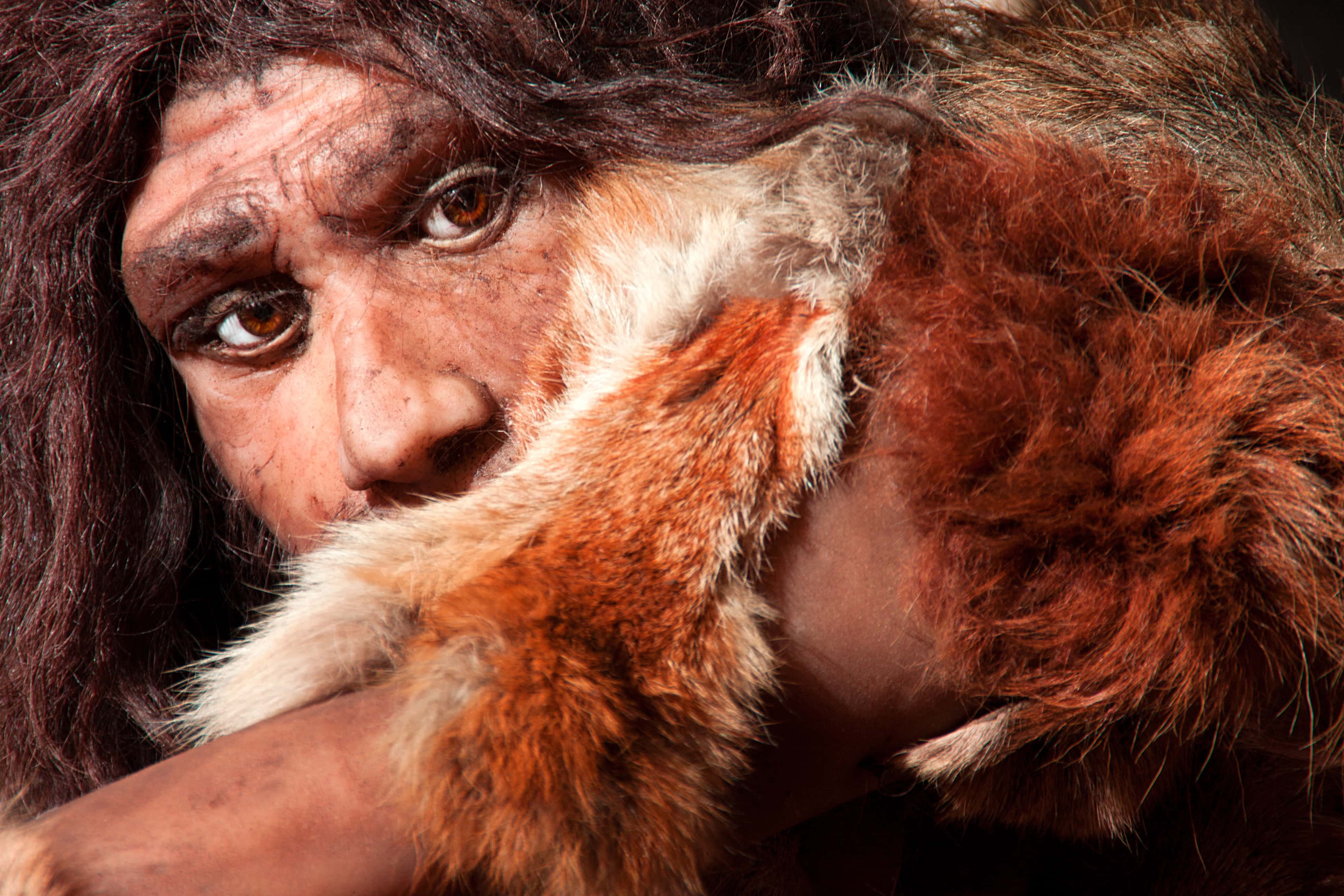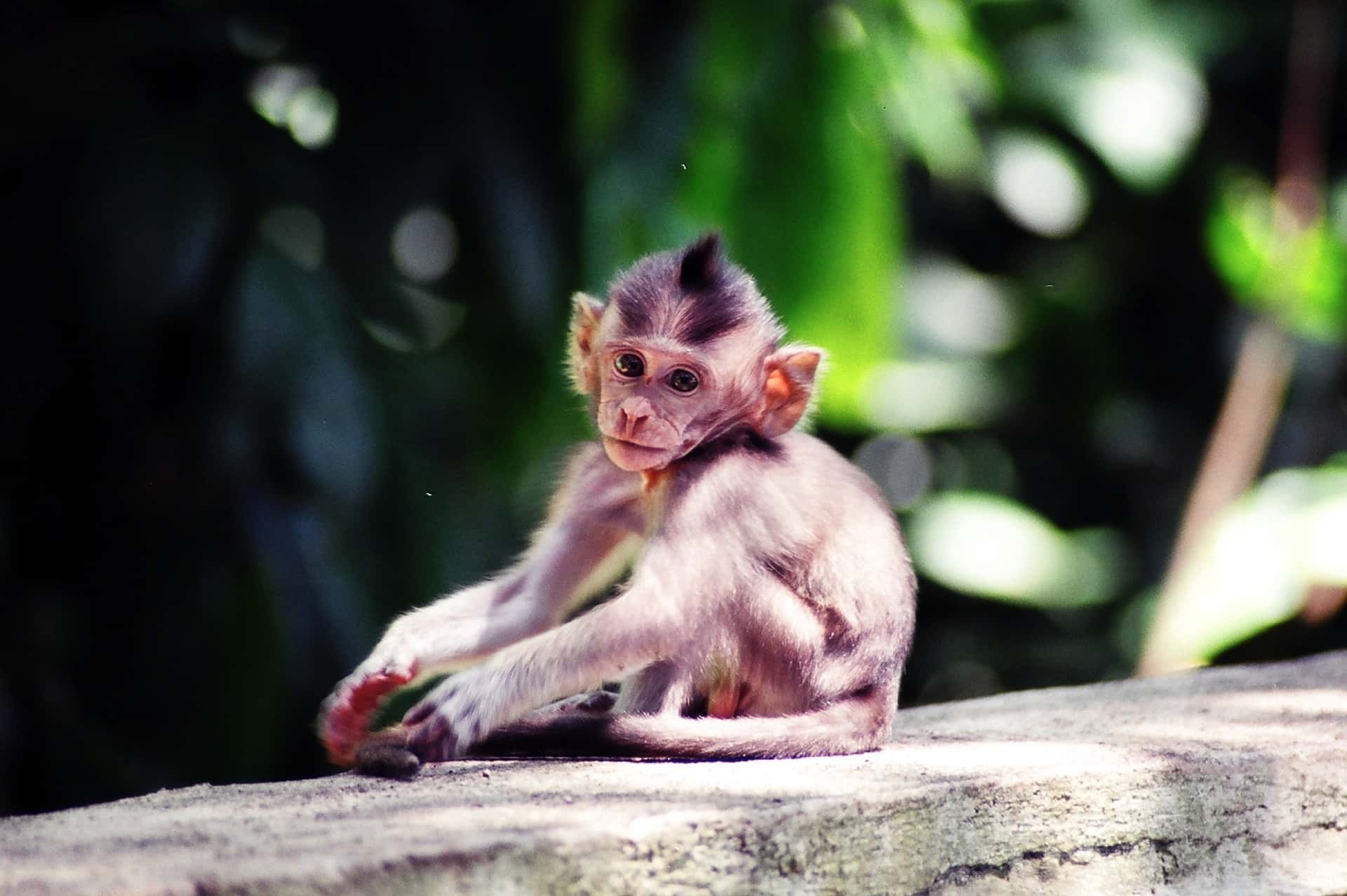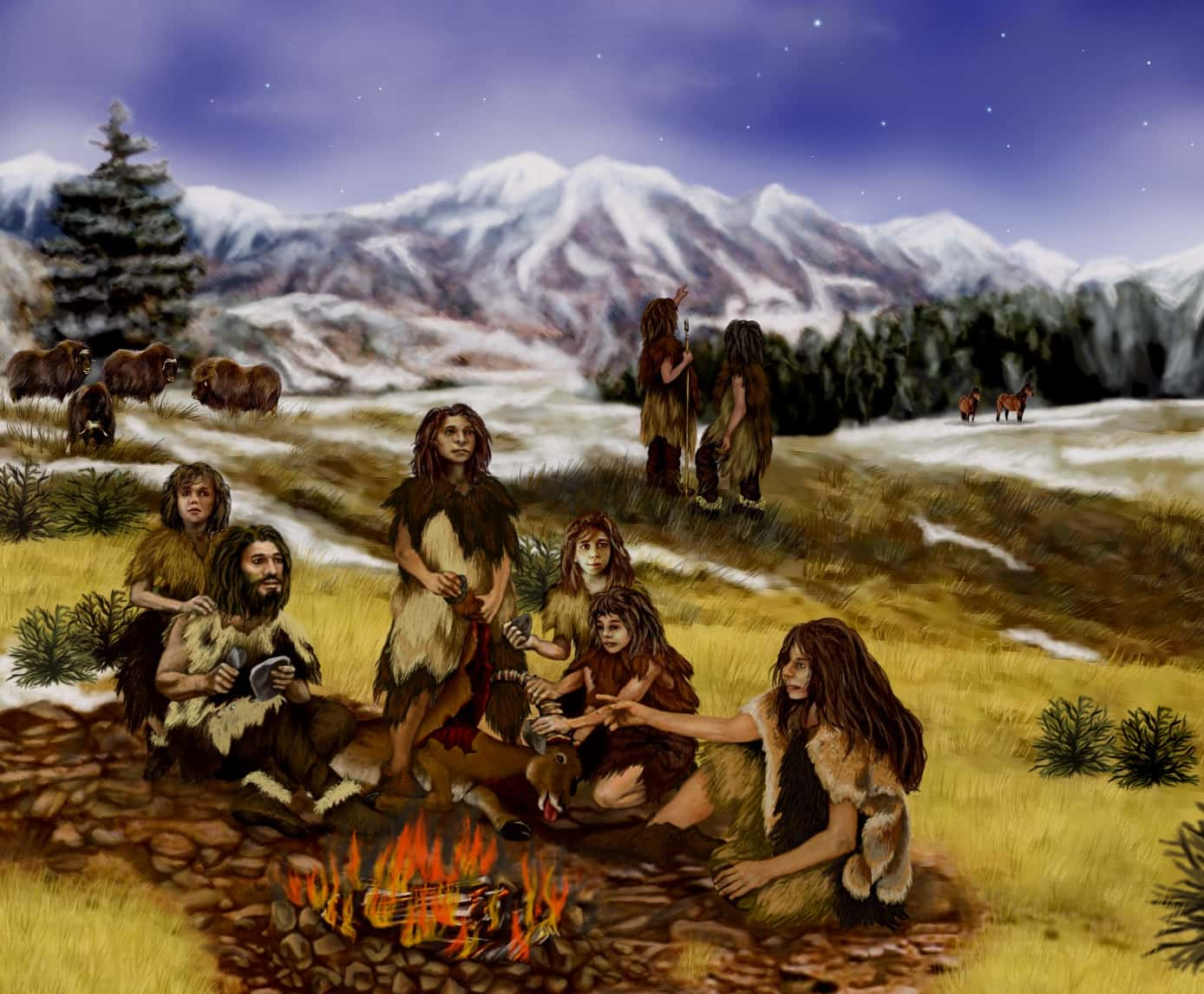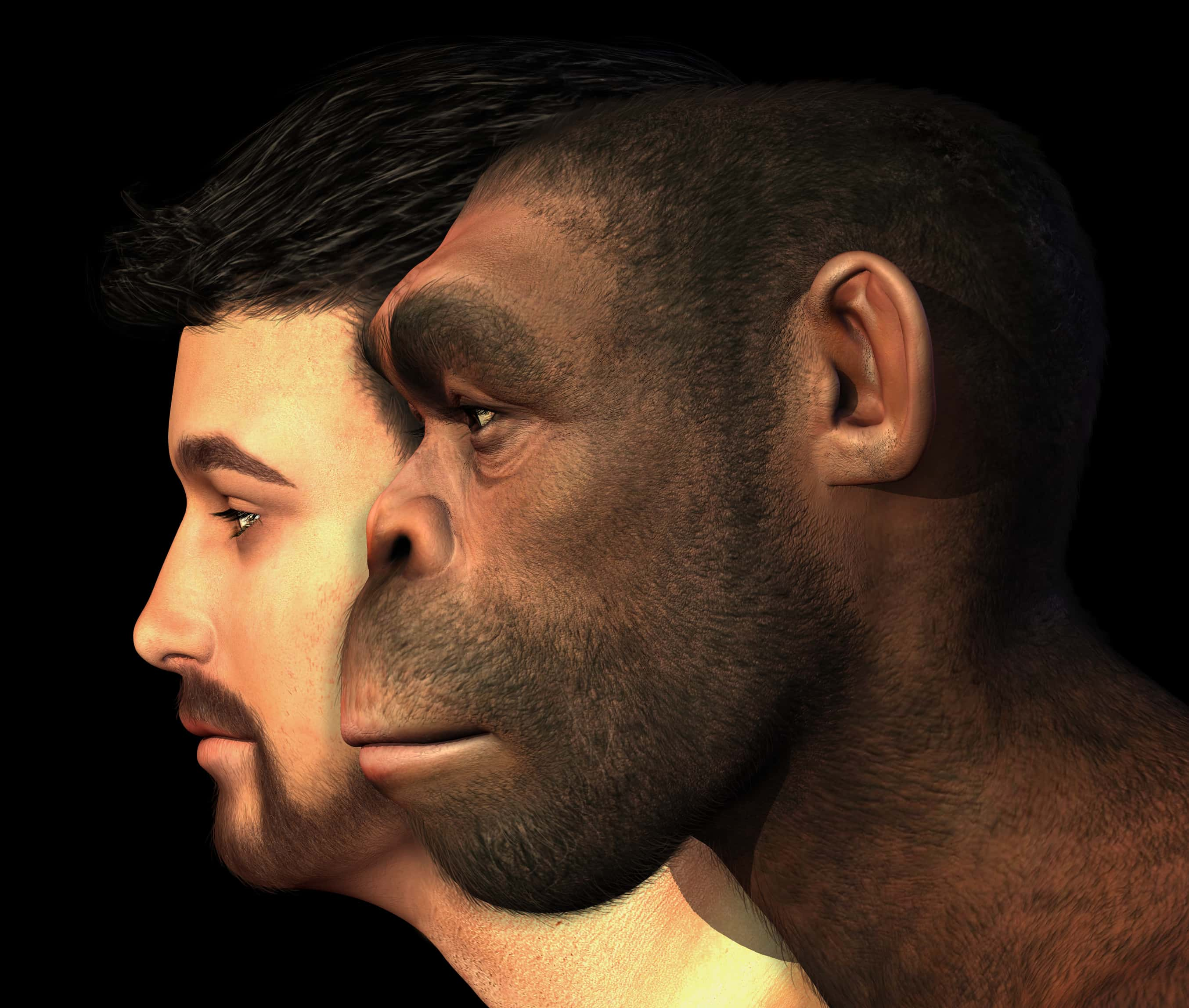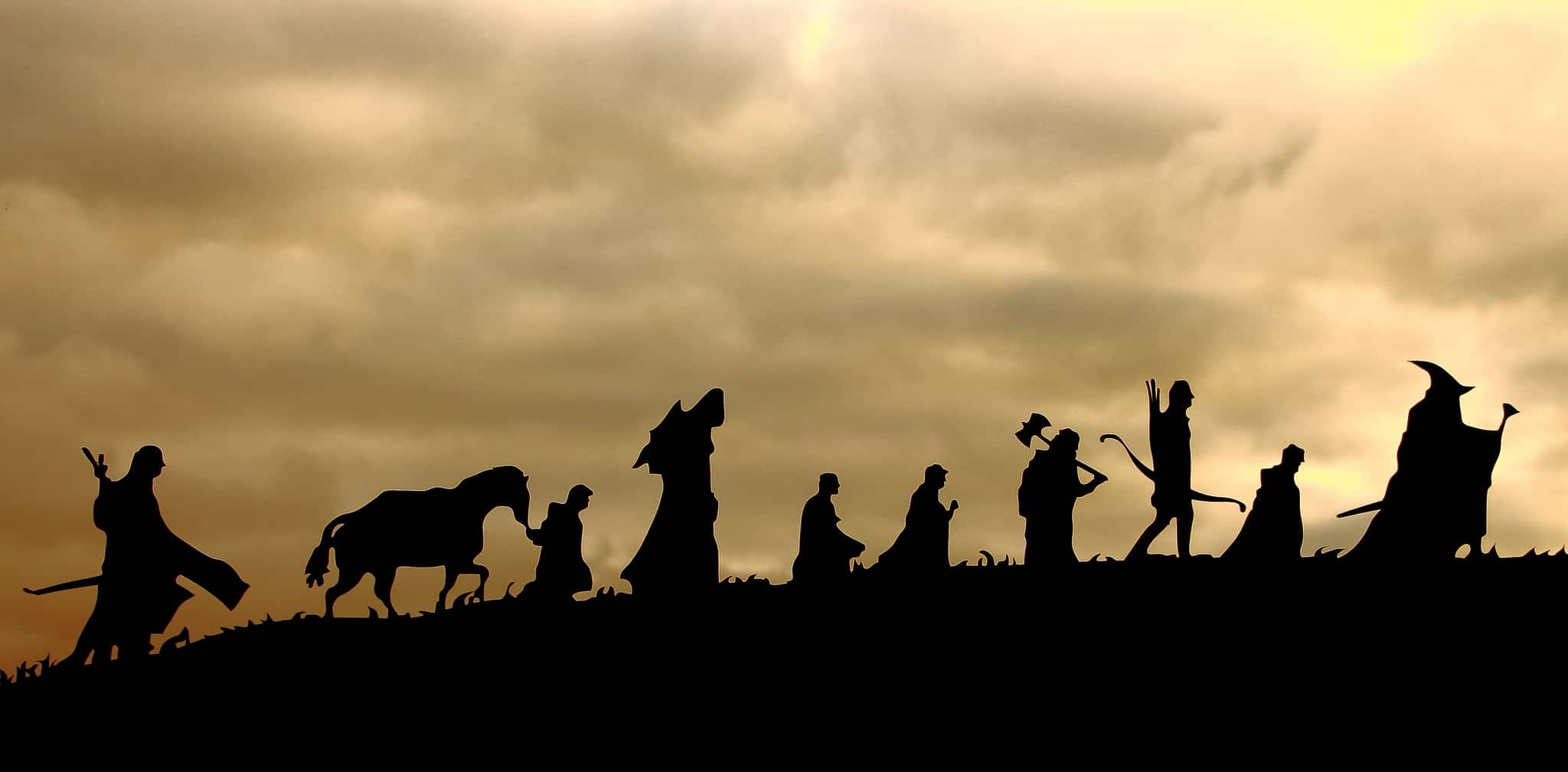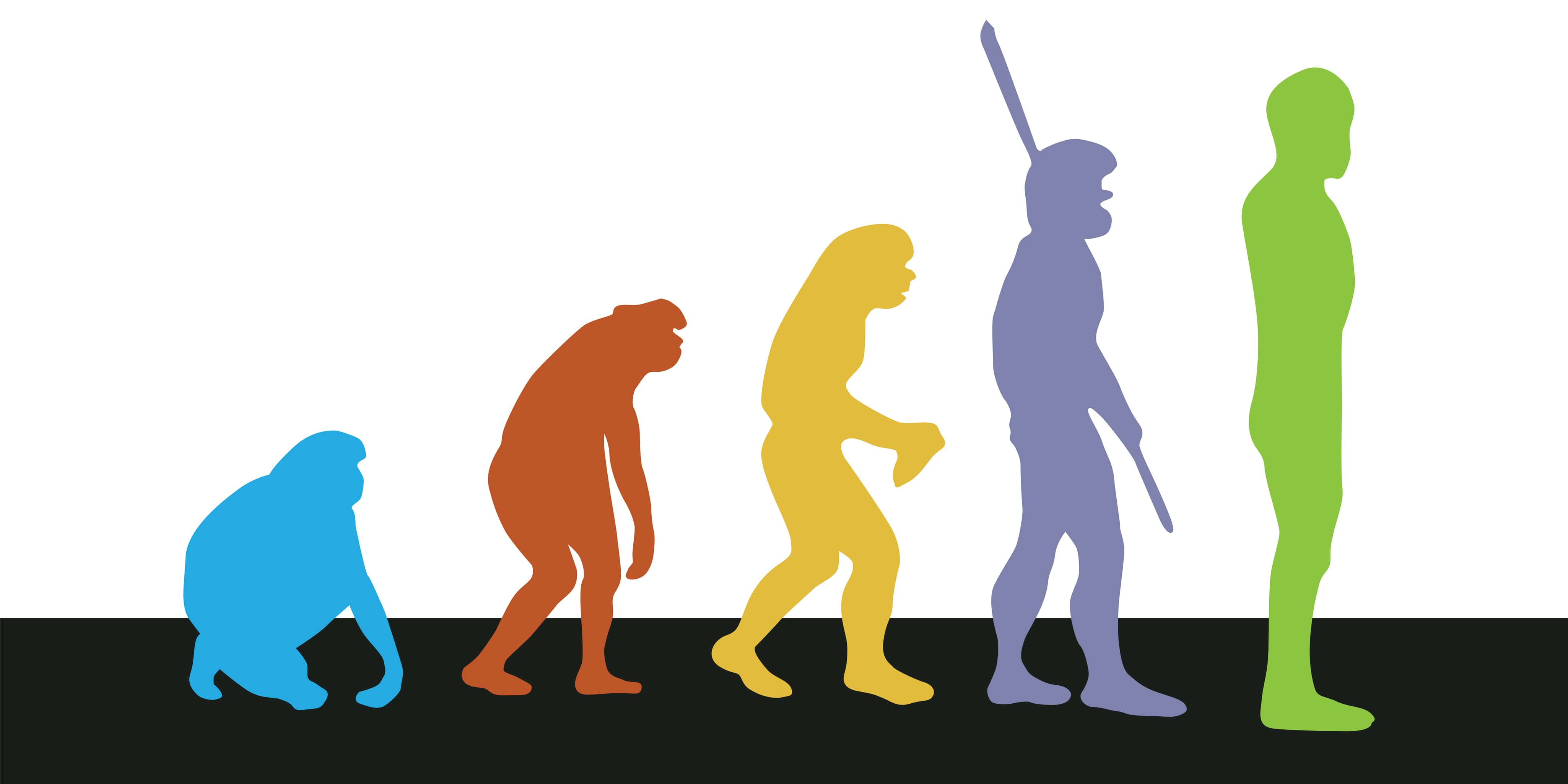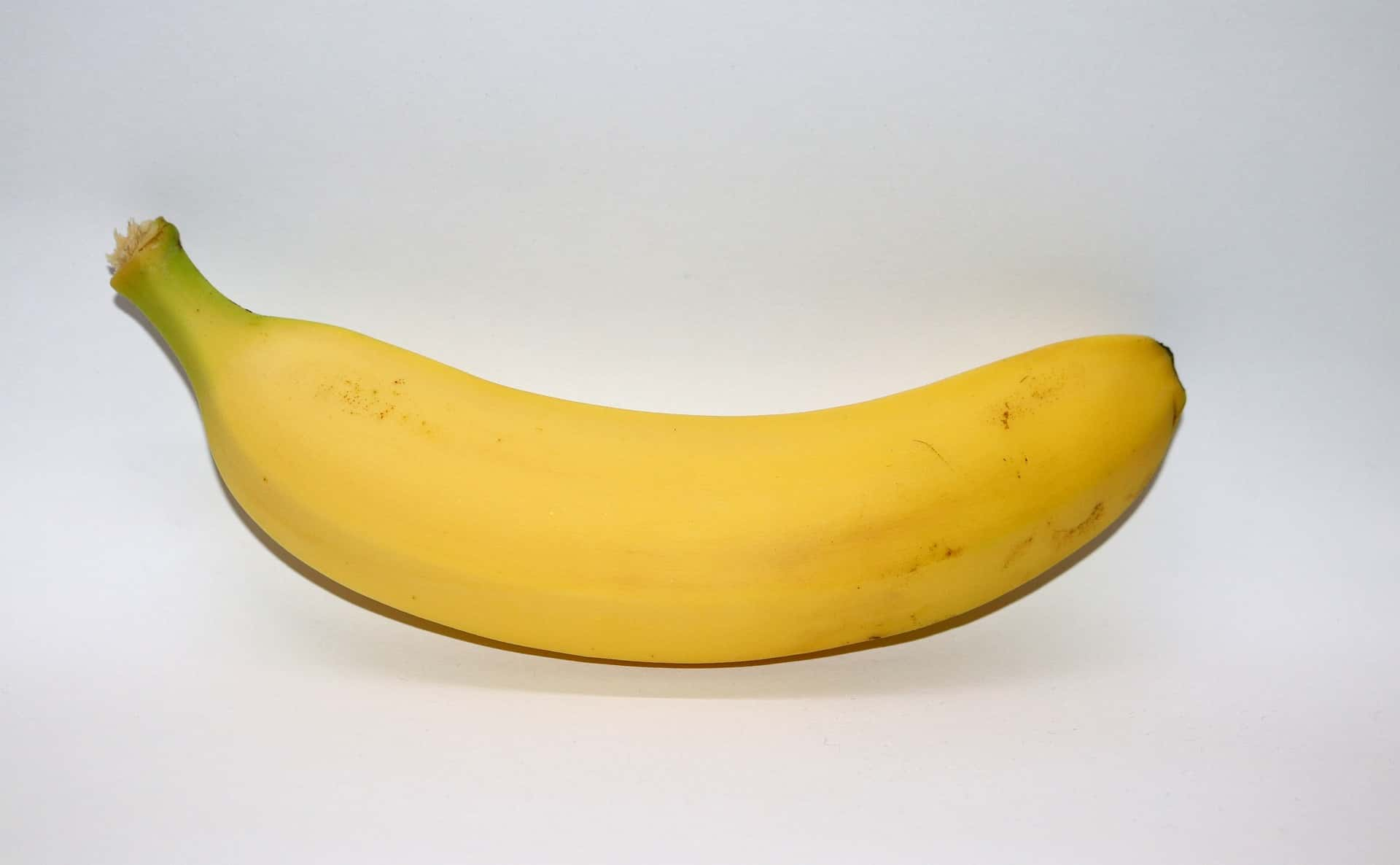I don't want to burst your bubble, but we're all just fancy monkeys. Primates, to be exact.
That's right: Homo Sapiens (that's us) may have been dominating the planet for the last few thousand years, but before that we were just another species in-development, battling the rest for survival and a place at the watering hole. Actually, we're still in development. Evolution never stops, after all...
But before we all continue to evolve into something different altogether (lizard-people, anyone) let's pause for a moment to take stock of how we got here. It might just be the greatest story ever told.
Here are 43 Wild Facts About Human Evolution.
Human Evolution Facts
43. Different Looks
60,000 years ago, as humans moved away from Africa and the Equator, we developed variations in skin tone (lighter skin absorbs more vitamin D), hair texture, and facial features.
It's one of the more noticeable effects of different environments on our evolution. If only some people could see it that way.
42. Big Bones
Early humans had thick bones to deal with harsh climates. Starting 50,000 years ago, our bones became smaller and weaker as we began to live less physically demanding lifestyles. I mean, I once broke my wrist petting a dog. If I were alive 4000 years ago, that would have been a fatality.
41. Back Pain
Back pain and other problems are common in modern humans, as we walk upright over great distances.
Add cement sidewalks and improper footwear to the equation, and you've got a recipe for a lot of Robaxacet commercials. Our spines have just not adapted yet for the modern world.
40. Is That Meat Ready?
The discovery of fire changed the way we're built.
We began cooking food on controlled fires around 790,000 years ago— which meant the average human was soon consuming far less dangerous bacteria. Turns out, less raw meat = less grossness. That soon led to shorter human digestive tracts, as there was less of a need to process foods. The increase in healthy meat consumption also led to more energy available, which evolution translated into taller bodies and larger brains.
Basically, if you're more than 4.5 feet tall and have a big enough brain to read this sentence, you've got fire to thank. Just, you know, maybe say thank you from a distance...
39. No Brain Drain
Brain size has tripled over the course of human evolution. It's possibly the single-greatest reason we've been able to survive as a species— let alone dominate the planet to such an insane degree. After all, we've got no claws, teeth, or thick, blubbery skin to help us along.
But, ironically, we're not sure why we developed such big brains in the first place. Scientists suspect it's mostly due to dramatic climate change, and our resulting requirement to process new unknown terrain. We can't be sure, though. Our brains clearly aren't quite big enough yet.
 Shutterstock
Shutterstock
38. Social Network
Our social lives are a fundamental part of evolution.
The first instance of us building shelters was 400,000-800,000 years ago, while the first instance of groups exchanging resources was from 130,000 years ago. Researchers have speculated that those advanced forms of social cohesion are one of the primary reasons for our success as a species. Despite what it might seem like sometimes in the news, we're pretty dang good at sharing and working together.
Maybe that explains why social media seems to be a doing a number on so many of our brains. We adapted for an entirely different social landscape.
37. Cool Tools
Tractors. Machine guns. Cast-iron waffle makers. What do they all have in common?
They're all advanced forms of a simple idea: tool making. It's possibly the single behavior that most differentiates us from the other animals on Earth.
And it's something we've been doing for a long, long time. The oldest stone tools date back to about 2.6 million years ago. They include stone flakes, hammerstones, simple cutting tools.
36. Choke Artists
Humans are also the only mammals that face a significant risk of choking on food. Why? The lowering of our voice box, which is exactly what makes it possible for us to speak. Similar primates (like a Capuchin Monkey, for example) struggle to create the sounds needed for speech because their voice boxes never descended.
In the words of the linguist Stephen Pinker, "At some point, evolution chose human speech over human breathing."
Personally, I would take not choking over speaking. It would help during wing night.
35. Color Crayons
The oldest known use of color occurred about 250,000 years ago. Rudimentary crayons were discovered in Zambia, at the site of a simple cave-painting.
It seems the human compulsion to doodle is just part of our DNA.

Sign up to our newsletter.
History’s most fascinating stories and darkest secrets, delivered to your inbox daily. Making distraction rewarding since 2017.
34. Let There Be Art
17,000 years ago, humans had already developed all the tools and skills necessary for ceramics, painting, and sculpting. And based on the archaeological sites that researchers have turned up, we immediately set about using those new skills to make a variety of pots, bowls, and other fancy things.
Presumably though, parents of early humans still thought they were wasting their time. “Paint no bring wealth. Hunting bring wealth!”
 Shutterstock
Shutterstock
33. Crops and Herds
Modern agriculture began around 23,000 years ago.
Archaeologists discovered evidence of the earliest-known human agriculture at a well-preserved hunter-gatherer settlement in Galilee, Israel. Many argue that agriculture later became the foundation of western culture and lead to the development of our modern societies.
32. Brown Eyes
Most of the world had brown eyes until about 10,000-7,000 years ago.
Scientists are still debating the possible reasons, but around that time a genetic mutation produced blue eyes... and it took off from there. Currently, 8% of the population has blue eyes.
31. Tall Tails
Back in our more monkey-like past, we all had tails. It's just one example of our primate past.
Today, we still have tails for a while... just when we're in the womb. All we have remaining at birth is the tailbone, or coccyx.
A baby human, circa 500,000 years ago
30. Not-So Wisdom Teeth
Scientists agree that your wisdom teeth are produced by genetic “leftovers” from when humans ate a primarily plant diet.
They thought the same thing about the appendix for a long time as well... but that's turned out not to be the case. Scientists have discovered it had an essential evolutionary function: it’s a "safe house" for the beneficial bacteria that live in the human gut.
 Pixabay
Pixabay
29. Hiccups
Hiccups may also be a leftover, from back when we were an aquatic species.
Basically, the same muscle used to process water in a fish’s gills is what's responsible for the contraction we feel when the diaphragm goes into spasm. I.e. a hiccup.
Remember: the next time you're experiencing the hiccups, it's really just your fishy heritage coming out. Treat them by leaping into the nearest ocean.
(Please don't actually do that)
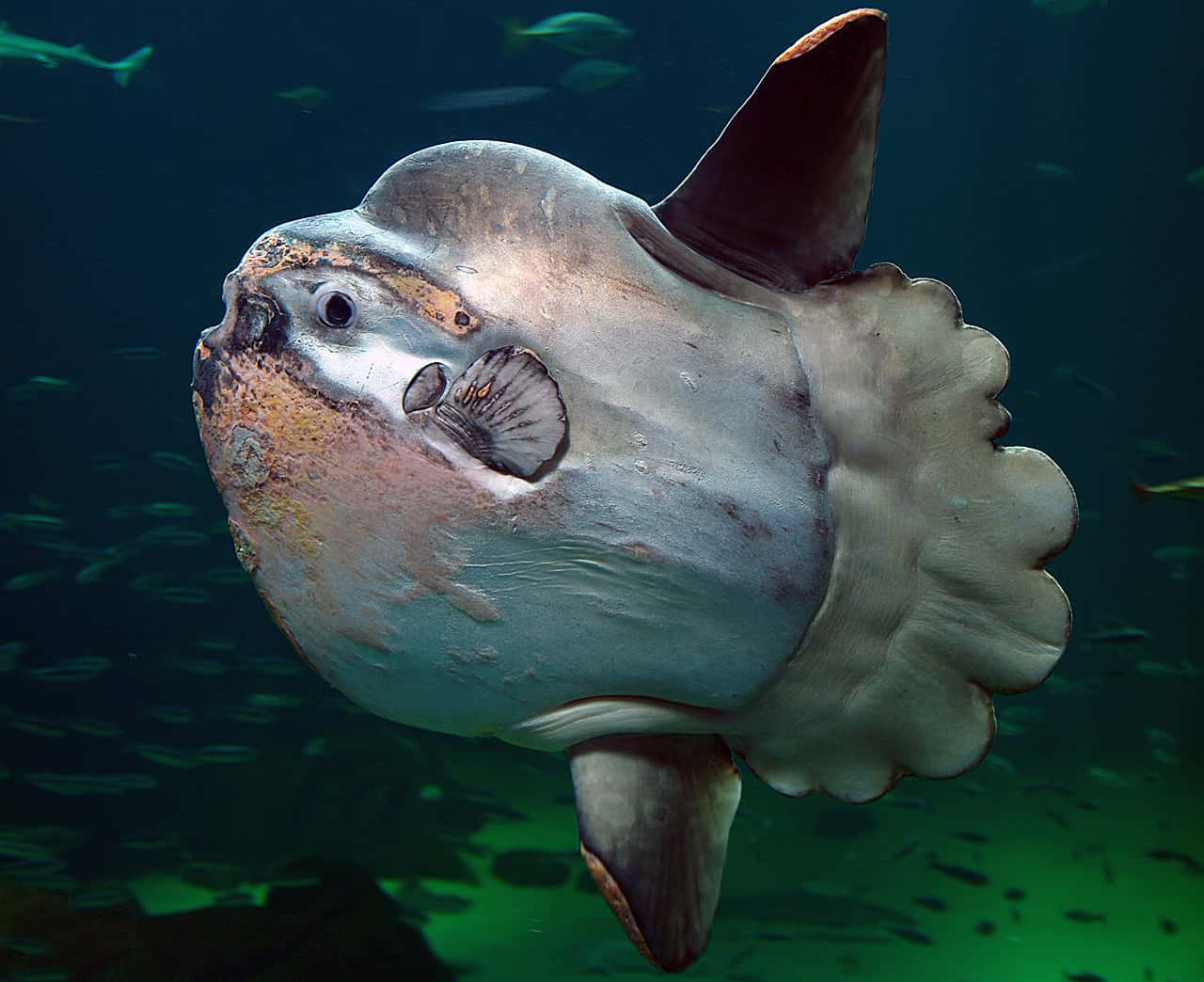 Wikipedia
Wikipedia
Just be glad we're better looking than them.
28. Hands On
Humans differ from primates in that we are able to contract the ring and index finger to the thumb. It's this seemingly simple adaption that allows us to use such complex tools. And, perhaps more importantly, play video games!
![]() Rawpixel
Rawpixel
Monkeys dream about this kind of dexterity
27. Pink Eye
The small pink tissue in the corner of the eye is leftover from a third eyelid, similar to those found in a bird or reptile. It helps to protect our eyes by keeping them moist.
Does this support the Reptile Illuminati Theory? Probably not. But I'm sure that won't stop some people from using it as evidence.
26. Ear Wiggle
Can’t wiggle your ears? Don’t worry, you’re amongst 85% of the population. Scientists believe this is leftover from when our early primate ancestors moved their ears in the direction of sound. Whaatttt???!!!!
No one has quite the ear wiggling skills as this guy.
25. Foot Muscle
About 9% of the human population today has an utterly useless muscle in their leg.
It's called the Plantaris muscle, and it used to have a legitimate use: back in our monkey days, it helped us to grip and manipulate objects with our toes. Now, of course, our fancy fingers and thumbs have taken over that function... leaving the plantaris out of work.
In fact, the thumb has rendered the plantaris muscle so useless, scientists like to use it when reconstructing other parts of the body.
24. No Hair Care
Here's something you might have noticed: Humans have less hair than other mammals.
Scientists believe we evolved to have less hair to help forage food in shallow water, lose heat, and reduce the instance of parasites.
Also, it saves on shampoo. You would not believe how much the average gorilla spends on 3-in-1 bodywash, shampoo, and conditioner. No wonder so many of them struggle to pay the bills.
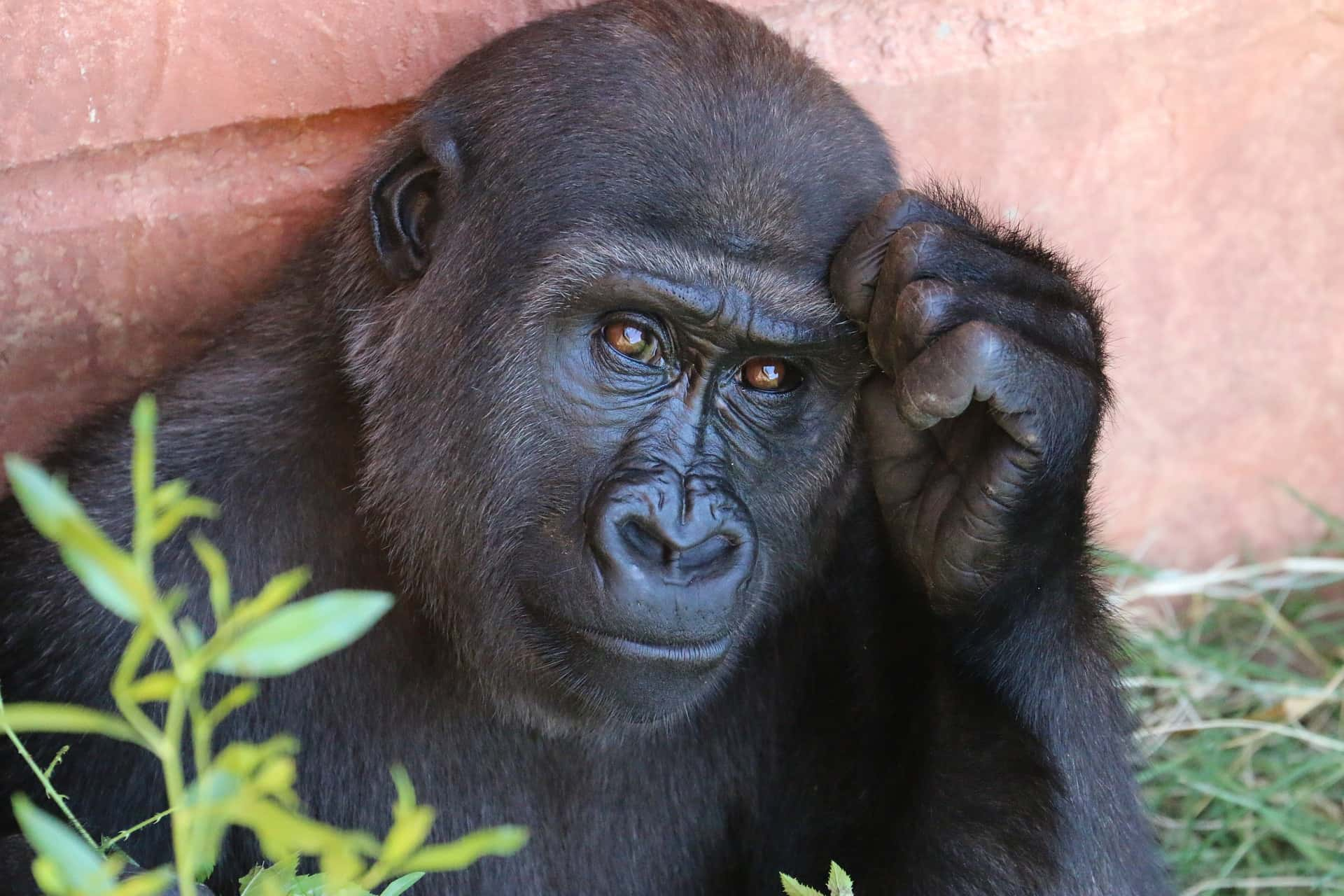 Pixabay
Pixabay
23. Lip Twitching
This reaction to getting angry is a leftover from when we used to bare our teeth. It's a trait that can still be seen with dogs and chimpanzees.
Pretty effective if you ask me.
22. Humans on Humans
Over a dozen species of early humans have been proven to have existed, some of whom inhabited the planet at the same time as each other.
Of those, of course, Homo Sapiens are the only ones to have survived. And you thought your uncle Mike was different.
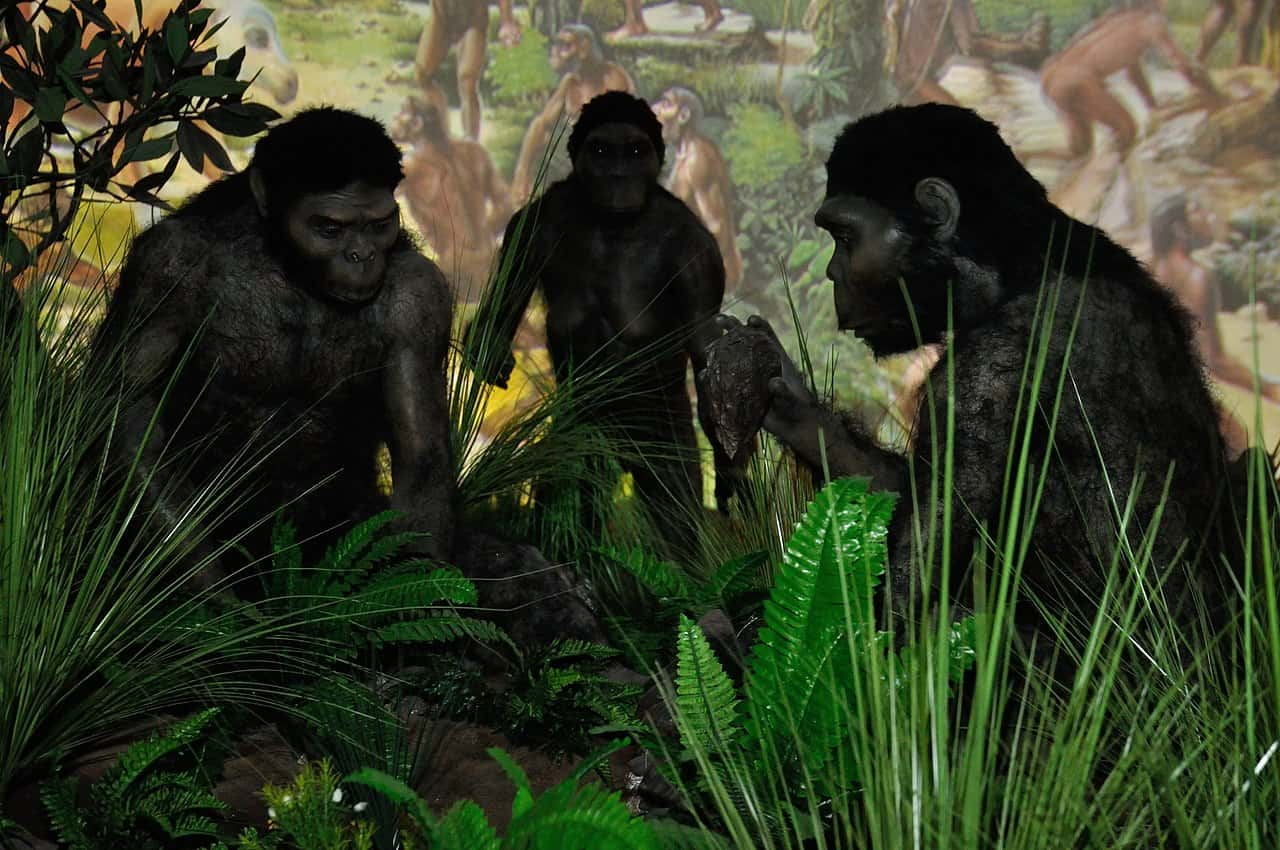 Wikimedia Commons, Biswarup Ganguly
Wikimedia Commons, Biswarup Ganguly
21. Big Jaw More Dates
According to biologists, women are attracted to men with a big jaw, which indicates to a partner that they have more testosterone.
Men seem to like women with small chins, meaning more estrogen.
20. Small Tooth Big Brain
We have discovered the human brain got bigger as tooth size decreased. We’re pretty certain they happened independently, but either way, we’re the only primates where this occurred.
19. Meat = Brain
Scientists think that the increased consumption of protein might have contributed to increased brain sizes.
When measured, protein domains occur in higher quantities in humans when compared to chimps, gorillas and mice. Take that, vegetarians!
 Pixabay
Pixabay
18. Neanderthals
This subspecies of human lived with us until about 25,000 years ago. They were shorter, much stronger, and had a smaller prefrontal cortex. Scientists remain unsure of exactly what happened to them... although it's likely that we (and other human subspecies) helped to speed along their extinction.
Anyway, I'm pretty sure they’re not all extinct. I've met a few working security at nightclubs.
Sorry, please don't hit me.
17. Neanderthal Culture
Humans think we’re the only ones with a culture, but studies have found that Neanderthals buried their dead with flowers, suggesting some form of religion and, therefore, culture.
Scientists are yet to confirm if their was Neanderthal Pop Music.
16. Neanderthal and Humans
Researchers have found that some humans have Neanderthal DNA, suggesting that humans probably reproduced at some crossover period.
15. Long Life, Slow Metabolism
Ever wondered why it is that humans live so long, compared to other animals? How come we're cursed to almost always outlive our pets??
Well, besides healthcare and our big ol' brains, it helps that we have a much slower metabolism than most other mammals. Slow rates of aging match our slow rate of energy expenditure (we burn calories 50% slower) and help us survive for decades.
So you've got a reason not to complain after the holiday season.
14. Born Sailors
50,000 years ago, humans built crude boats and used these to sail the Indian Ocean. That's actually how we eventually reached the continent of Australia.
Meanwhile, I get seasick just from watching people sail. I'd be a terrible explorer.
 Pixabay
Pixabay
13. Blushing
Humans are the only animals capable of blushing, and evolutionarily it elicited sympathy, which showed other animals that we meant no harm!
12. Climb On
When people feel threatened, they may have an urge to lift their feet or climb to an elevated area. Picture the stereotypical reaction to a mouse in the house.
This is a leftover reaction from a bygone era, when mammals like us would climb trees when threatened.
11. Goosebumps
Goosebumps seem like a useless bit of human physiology. What's the point of getting bumpy in reaction to a scare?
Well, back in the days when we had serious body-hair (no, your uncle's back hair doesn't count) goosebumps served a legitimate purpose: they made us look bigger! Our hair follicles would become raised, serving to plump up our hair and create the visual of a more impressive beast.
Nowadays, of course, we just get them from listening to a rad song. Not so tough after all...
10. Hobbits Among Us
Scientists discovered a species of early humans in Indonesia that averaged 3 foot 6 inches tall, had tiny brains, and used tools. They also lived with pygmy elephants and giant Komodo dragons.
Shockingly, the scientist who discovered the species was not named J.R.R Tolkien.
9. Survival of the Quotiest
Charles Darwin was an impressive man, and his many discoveries left him a legacy that will likely stand the test of time. Come on, who is ever going to forget a quotable phrase like "survival of the fittest"??
Well, about that...
Turns out, Darwin's best-known sentence isn't actually a Darwin quote at all. Philosopher Herbert Spencer came up with the phrase... and hasn't gotten any of the credit.
I guess when it comes to timeless quotations, it's really survival of the famous.
 Wikimedia Commons
Wikimedia Commons
8. Theory of De-Evolution
One-third of Americans reject the Theory of Evolution.
This may have something to do with the way that it is taught.
7. Banana Republic
Humans share about 50%-60% of their DNA (genes) with a banana. So stop eating your cousin, you awful, awful bannanibal!
Just kidding, we also share our DNA with most other living things. That includes chicken (60%) and cows (80%), for the record.
6. Hairy Humans
One square inch of human skin has as many or more hair-producing follicles as other primates. The difference is ours is lighter, thinner and shorter.
5. Clothing Evolution
The evolution of clothing has influenced the evolution of animals such as the louse, which clings to clothes rather than the body. The peppered moth is another example, as it evolved to look black during the Industrial Revolution. That’s probably not a good thing. Just guessing.
4. Grandma’s Caveman Cookies
Scientists have discovered that grandmas actually contributed to human evolution.
Grandmas taking care of children allowed mothers to have more kids, contributing to the flourishing of our species. In that case, tell us another tale of the Old Country, Granny!
 Shutterstock
Shutterstock
3. Humans Throw
Doctor Neil Roach and his team of human biologists at Harvard (that's scientists who study human biology, not a bunch of biologists who happen to be human) have made a fascinating discovery: throwing makes us distinctly human.
No other species can throw as fast as us. This evolutionary trait allowed us to hunt in larger capacities, significantly contributing to other aspects of our evolution, including brain size. So does that mean Javelin is the most evolved sport?
2. Face Symmetry
Humans are biologically driven to be more romantically and sexually attracted to someone who has a more symmetrical face.
Symmetry is an evolutionary indicator of good health and strong genes.
Is that why I can’t find a spouse? Blasted Symmetry!
1. Who Runs the World? Homo Sapiens
Homo Sapiens—which is all us modern humans—have been around for 200,000 years! That’s a long time. For all you kids out there, that’s just under 2 billion episodes of Game of Thrones.
Thank you evolution
Sources: 1, 2, 3, 4, 5, 6 , 7, 8


